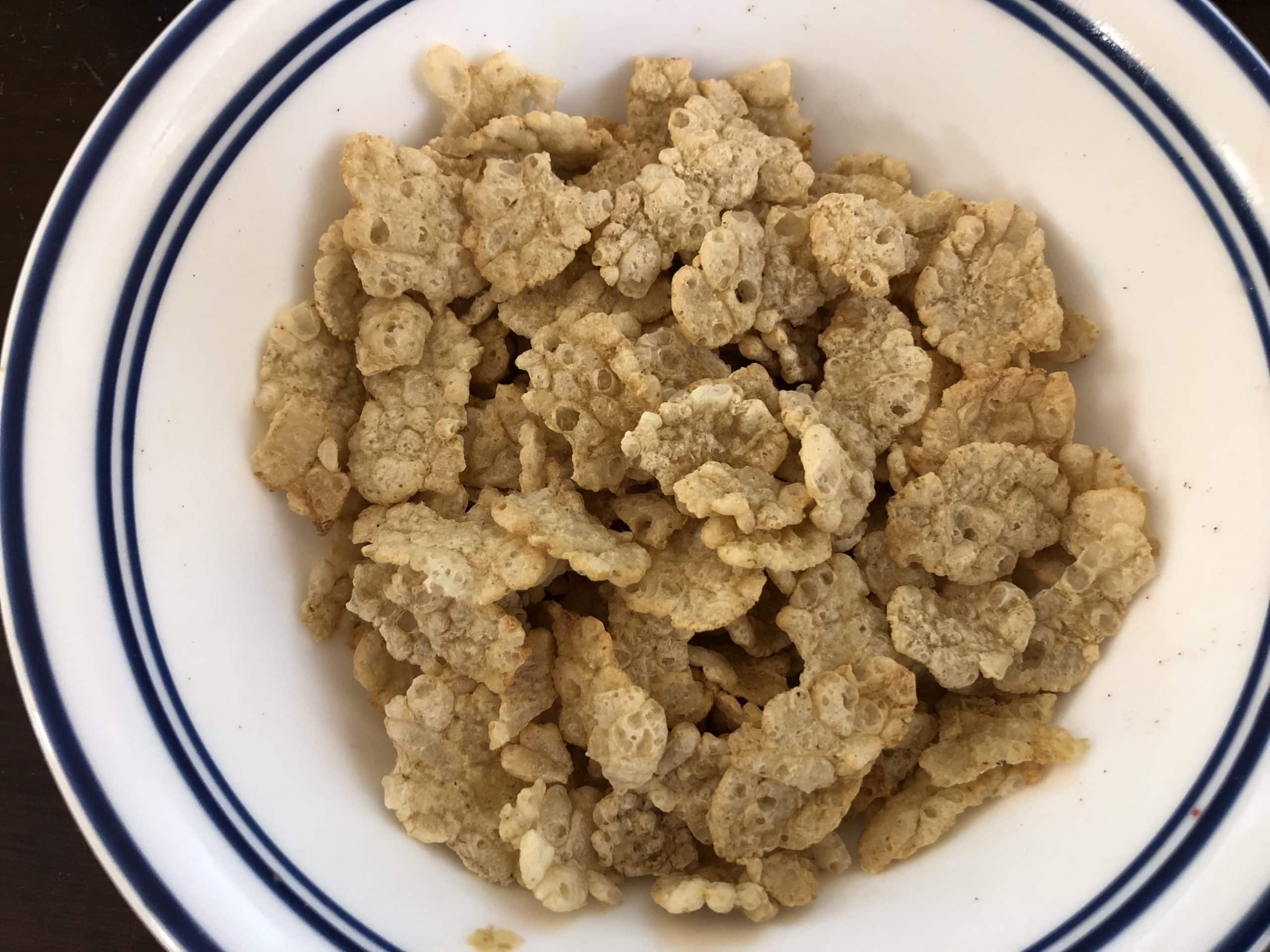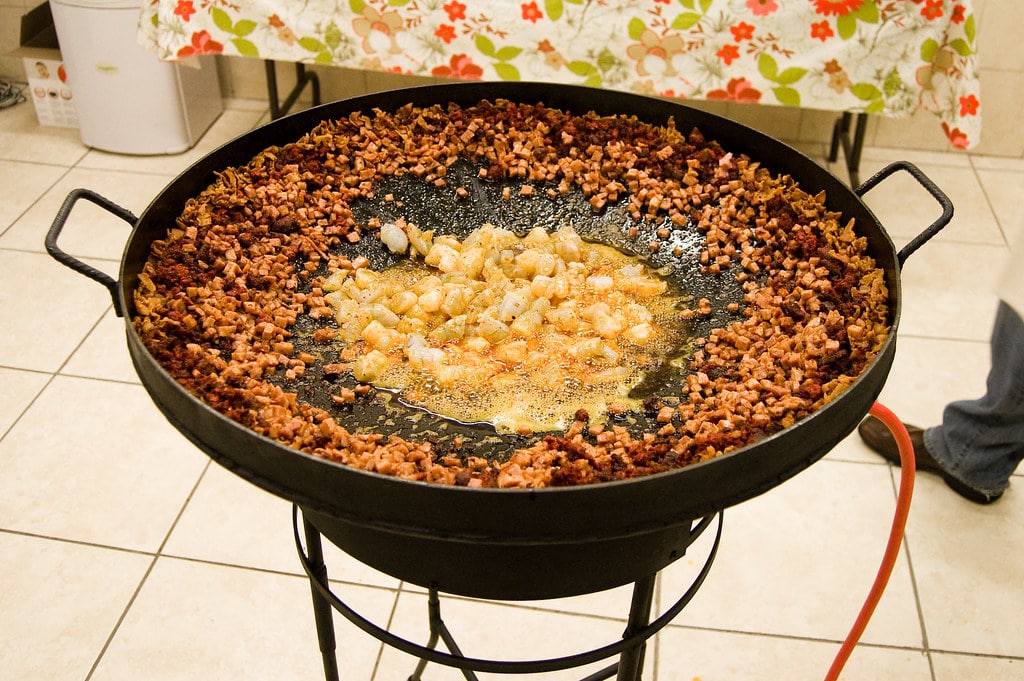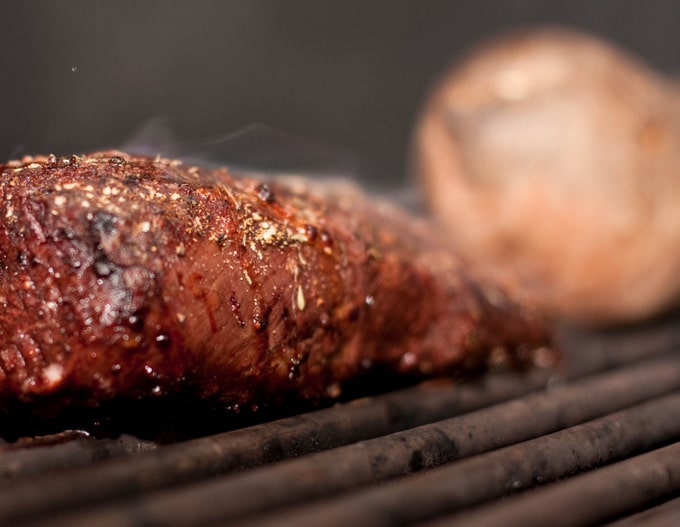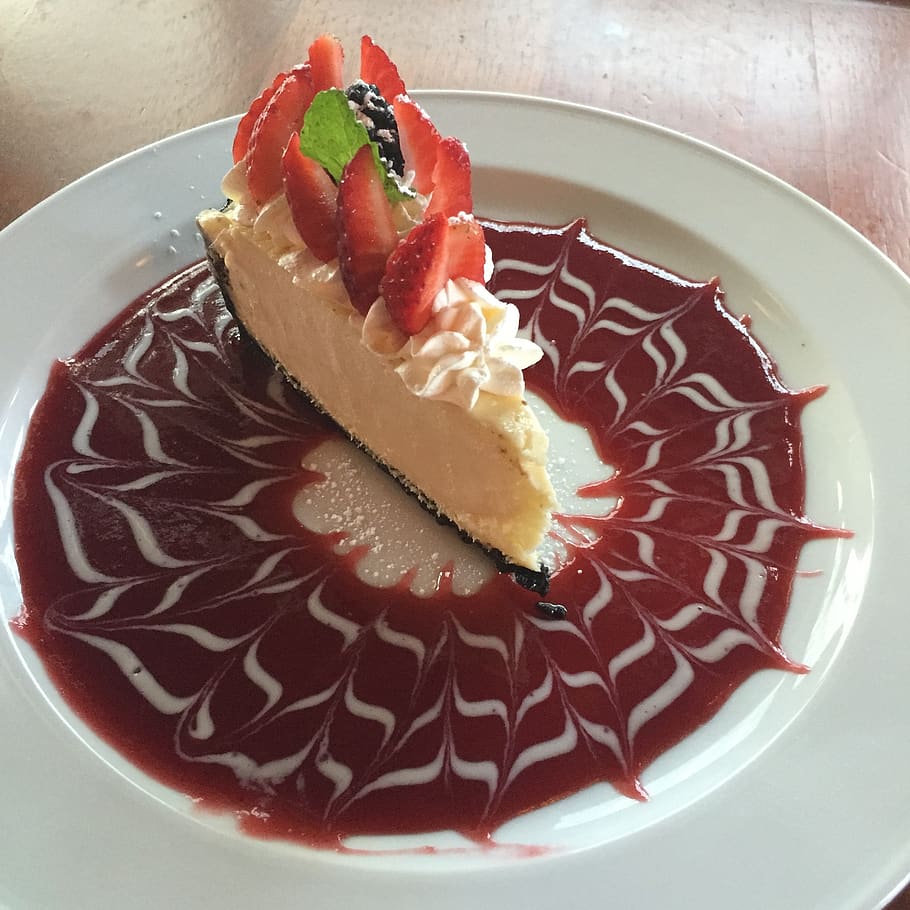**Vanilla** stands out as a favorite flavor across the world, popping up in countless desserts, baked treats, and dairy delights.
Many admit that a simple whiff of this amazing flavor sends the olfactory system into euphoria.
Research shows that a bite of it, especially ice cream, is perfect comfort for more than 30% of dessert enthusiasts.
Vanilla comes from a clinging vine that produces light green, white, yellow-green, or cream flowers.
The hummingbirds or melipona bees pollinate the flowers, after which they grow into bean-shaped pods.
These pods are hand-picked on ripening and then subjected to a lengthy curing process resulting in aromatic black pods, which are sold all over the world.
In this article, we look into everything you need to know regarding the origin of vanilla.
We discuss its history, preparation process, and when people started using it in cooking.
Additionally, we highlight why this great flavor is expensive and finalize by answering frequently asked questions regarding where vanilla comes from.
Where Does Vanilla Come From?
Vanilla comes from a clinging vine that grows up to 400 feet, requiring support from a tree.
It takes approximately three years for the vines to mature and produce flowers.
These flowers open for one day and should undergo pollination within that period; otherwise, they’ll wither and dry.
Vanilla flowers can be pollinated by hand using a method discovered by slave Edmond or through birds or bees.
If pollination is successful, the flower develops into a pod that’s usually about 10 inches long and contains thousands of black vanilla seeds.
These pods take about nine months to mature, after which they are harvested and taken through the curing process.
Vanilla Beans Curing Process
On harvesting vanilla beans, they are usually bland, so it’s essential to cure them so that you can get the desired flavors and aromas.
The curing process involves the following steps:
Blanching
This step involves immersing the vanilla beans in hot water.
The hot temperatures stop the ripening and activate vanillin, a component that gives them their characteristic flavor.
Sweating
After blanching the beans, they are rolled using a warm blanket and placed in an airtight container or a dark place.
Each day, the blankets are placed in the sun and returned to the house in the evening.
The sweating process is done for about two months, allowing for fermentation.
After removing the beans from the blanket, they are dried under the sun for four weeks before proceeding to the last step.
Conditioning
This process involves covering the dry vanilla beans in wax paper and keeping them in a closed box.
Conditioning takes about four weeks and is commonly done during shipment to long-distance areas.
The History of Vanilla
Vanilla is the only member of the orchid family that’s edible.
It was first grown in the Caribbean and Central America by the Totonacs of Mexico’s east coast.
People used it in amulets to protect themselves against evil and in temples as a fragrance.
The vanilla was then acquired by the Aztecs and later the Spanish after colonization in the 15th century, who used it as a beverage flavor.
According to research, Hernán Cortés, a Spanish conquistador, is the one who introduced vanilla to Western Europe.
He transported it together with other imports like the armadillo and jaguars.
Until the late 1900s, Mexico was the only country growing a significant amount of vanilla globally.
Today, you will find vanilla grown on a large scale in countries like Madagascar, Kenya, Costa Rica, Fiji, India, Indonesia, China, Hawaii, Uganda, Tonga, Papua New Guinea, and Guatemala.
In these countries, you’ll find at least three types of vanilla, the most common ones being Tahitian and Bourbon, commonly used commercially.
When Did Vanilla Start Being Used in Cooking?
According to culinary historian Waverley Root, people started adding vanilla to recipes in the 1800s.
The first recipe book to have vanilla as an ingredient was the Art of cookery made plain and easy by Hannah Glasse, which indicated the addition of vanilla to chocolate.
After this, the use of vanilla in cooking skyrocketed, and people started adding it to other foods such as soft drinks.
Today people use vanilla in numerous foods, such as cocktails, milkshakes, and tomato sauce.
Why Is Vanilla So Expensive?
Vanilla is one of the most expensive flavors in the world, with a kilogram costing about $600.
The high prices are due to the following reasons:
Small Pollination Window
Once the vanilla vine has flowered, it stays open for 24 hours; pollination should have occurred within this time; if not, the flower dries.
This narrow window makes the growth of vanilla challenging leading to its scarcity in the market and making it expensive.
Long Maturation Period
Another factor that makes vanilla expensive is that it takes a long time to mature fully.
For instance, vanilla vines take up to two years to produce the first flower.
After pollination, the resulting pods must remain on the vine for about nine months to develop their characteristic aroma.
On harvesting the beans, they are usually green without any aroma or flavor.
For these characteristics to develop, you need to take them through a drying and curing process, which takes around one year.
The Weather
According to research, approximately 80% of vanilla is grown in Madagascar, a highland prone to storms.
These storms have destroyed millions of vanilla vines over the last five years, leading to market shortages and high prices.
Specific Growing Conditions
Vanilla is a delicate plant that requires unique and specific weather conditions.
For example, from research, the plant flourishes in regions within 10 to 20° of the equator, which are few globally.
These specific conditions result in the plant being grown in a few countries and areas, leading to its scarcity.
Some of the most common vanilla growing conditions include:
- An elevation of 1,500m
- Moderate rainfall (1,500–3,000 mm) that’s available throughout the year
- Temperatures between 15°C and 30 °C
- A humidity of 80%
- Loose soil with high amounts of organic matter
- Soil with a pH of 5.3
Where Does Vanilla Extract Come From?
If you are a dessert lover, you’ve likely encountered a recipe requiring vanilla extract.
This extract is used instead of the original vanilla, which is expensive and challenging to find.
It’s a common ingredient that adds a sweet vanilla taste and enhances other food flavors.
There are numerous methods of preparing vanilla extract, but the most common ones are:
Vacuum Distillation
This is the most common method of preparing vanilla extract, and it involves removing solvents from vanilla pods, leading to the acquisition of vanilla extract.
The concentration of the extract must be similar to that in the vanilla beans, usually 13.35 oz.
Though this process is FDA approved and efficient, it can destroy various essential aromatic substances such as vanillic acid in the final product.
Use of Vanillin
Pure vanilla is expensive; to reduce the production cost, most manufacturers use vanillin, a compound that resembles vanilla.
Vanillin can be synthesized from lignin found in woody plants or obtained as a byproduct in paper production industries.
To prepare the vanilla extract using vanillin, manufacturers usually combine vanillin and pure vanilla blend in a ratio of 1:8.
Can I Make Vanilla Flavoring at Home?
To make your vanilla flavoring from home, cut a vanilla bean open and immerse it in milk or water to extract the flavor.
You can also dip the beans in ram or vodka and give it two weeks if you want a strong vanilla flavor.
Additionally, you can choose to use plain vanilla beans by cutting them and adding them to the preferred food.
FAQs
How long does it take to produce vanilla extract after planting a vine?
It takes about four to five years to produce the vanilla extract after planting a vine; two years for a plant to flower, nine months for the pods to ripen and be ready for harvesting, and at least one year of curing.
What is artificial vanilla made of?
Artificial vanilla is made of a component known as vanillin.
Manufacturers produce it in laboratories from a liquid called guaiacol, which they collect after distilling resin.
Other manufacturers also use lignin, a polymer that gives plants distinct structures.
Why is vanilla extract expensive?
Vanilla is expensive because its growth is labor-intensive, making many farmers opt for less delicate plants.
Additionally, the main supply of vanilla is Madagascar which has recently experienced a lot of storms, destroying many plants.
These two main factors have greatly contributed to the scarcity of vanilla in the market, causing the prices to be high.
How can I make vanilla extract?
You can make vanilla extract by soaking vanilla pods in about 35% alcohol for around nine months or more.
The more you soak the pods, the stronger the vanilla flavor and aroma you’ll get.
Conclusion
Vanilla is a popular flavor that has dominated the spice market since the 1500s.
If you have been wondering where the vanilla in your pantry came from, go through the guide above.
It will enlighten you regarding the origin of your favorite flavor and explain how you can prepare it in the comfort of your home.
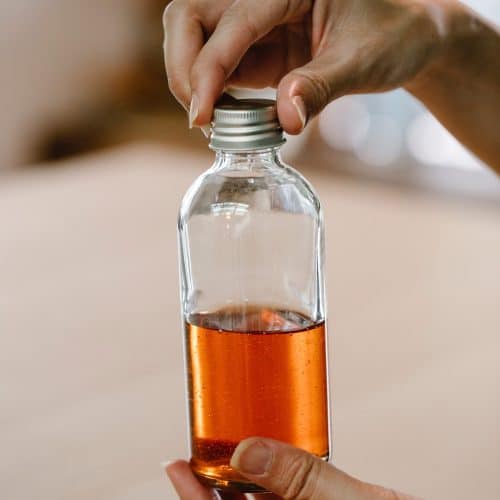
Vanilla extract recipe
Equipment
- 1 jar
Ingredients
- 5 vanilla beans
- 1 cup vodka
Instructions
- Slice the vanilla beans with a sharp knife to reveal the beans. Just cut a slit down the middle rather than totally dividing the bean in two. Cut the vanilla beans into smaller pieces if their length won’t fit in your bottle or jar. Put the beans in the container.
- vodka over the top. A funnel is useful. If more vodka is required, use it to completely cover the beans. Several times shake.
- Keep vanilla away from direct sunlight and at room temperature. Shake once every few weeks or once approximately once a week. Although it can be used in as little as 8 weeks, I advise waiting at least 6 months for the best flavor. A good 12 months or more!
- You can top off your vanilla as you use it by adding a little vodka each time. After you refill it, shake it, and shake it again before each use. After using the vanilla for the first time, entirely remove the beans if you’re giving it as a gift or if you don’t have any more alcohol to add. If the beans aren’t almost completely buried, they’ll start to get a little slimy.
- Aged vanilla extract can be stored for several years if the beans are completely submerged. It’s still safe to use if it still smells wonderful! Aged extract can be stored forever without the beans. The beans will eventually need to be replaced after you start using the vanilla and adding more alcohol after each use. It’s difficult to specify a time frame because some people might consume (and replenish) the vanilla more quickly than others. You will notice that the vanilla flavor is less potent after using and refilling the container frequently for about a year. Simply take out the used beans, put in the new beans, shake, and keep using/refilling.
Video
Nutrition
- 24 Homemade Air Fryer Desserts - July 27, 2024
- 26 Delicious Starbucks Cake Pops - July 27, 2024
- 25 Simple Greek Desserts Recipes - July 27, 2024
